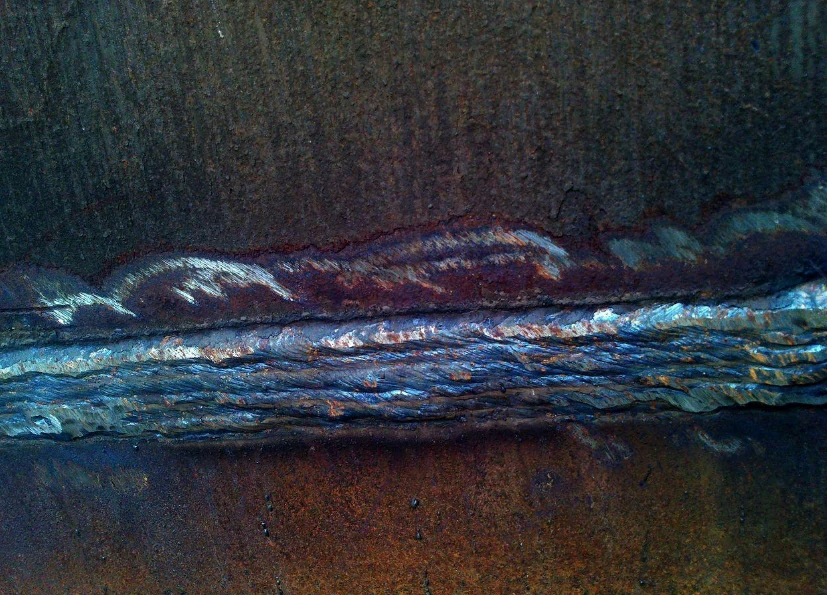Your Complete Handbook to Preventing Weld Undercut Like a Pro
Your Complete Handbook to Preventing Weld Undercut Like a Pro
Blog Article
Understanding the Art of Welding: How to Stay Clear Of Undercut Welding Issues for Flawless Manufacture Results
Effectiveness and accuracy are critical in the globe of welding, where also the tiniest flaw can endanger the structural integrity of a fabricated piece. One typical obstacle that welders face is undercutting, an issue that can compromise a weld joint and lead to expensive rework. By recognizing the root creates of undercut welding and implementing effective strategies to avoid it, welders can raise their craft to new levels of quality (Preventing weld undercut). In the quest of perfect fabrication results, understanding the art of welding to stay clear of undercut concerns is not just a skill however a need for those pursuing excellence in their work.
Comprehending Undercut Welding

To avoid undercut welding, welders should make sure proper welding specifications, such as readjusting the current, voltage, traveling speed, and preserving the right electrode angle. Furthermore, making use of the appropriate welding method for the certain joint arrangement is vital. Using weaving activities or backstepping strategies can assist make sure appropriate weld steel deposition and lower the possibility of undercut formation. Routine evaluation of welds throughout and after the welding procedure is additionally crucial to capture any kind of undercut very early and make required modifications to avoid further flaws. Preventing weld undercut. By recognizing the reasons for undercut welding and applying preventive measures, welders can achieve top quality, structurally audio welds.
Causes of Undercut in Welding
Recognizing the elements that add to damage in welding is vital for welders to produce high-grade, structurally sound welds. Insufficient welding existing or incorrect welding speed can additionally add to undercut. Comprehending these reasons and implementing appropriate welding strategies can help avoid damaging concerns, making sure long lasting and strong welds.
Strategies to Avoid Undercutting

To mitigate the threat of damaging in welding, welders can use critical welding methods aimed at enhancing the top quality and honesty of the weld joints. In addition, making use of the right welding method for the particular joint arrangement, such as weave or stringer grains, can add to decreasing undercutting.
Furthermore, proper joint prep work, Get More Info including ensuring tidy base materials devoid of contaminants and making use of the appropriate welding consumables, is essential in preventing undercut issues. Utilizing back-step welding methods and controlling the weld bead account can likewise help disperse warm evenly and reduce the risk of undercut. Normal assessment of the weld joint during and after welding, along with carrying out quality control measures, can assist in resolving and discovering undercutting issues immediately. By executing these strategies vigilantly, welders can attain flawless fabrication results with marginal undercut problems.
Value of Correct Welding Parameters
Selecting and preserving suitable welding criteria is important for accomplishing effective welds with marginal defects. Welding parameters describe variables such as voltage, current, travel speed, electrode angle, and protecting gas circulation price that directly affect the welding procedure. These criteria must be thoroughly changed based on the kind of product being bonded, its density, and the welding method used.
Proper welding specifications make sure the correct amount of warmth is related to thaw the base steels and filler product evenly. If the criteria are established too expensive, it can result in extreme warm input, triggering distortion, spatter, or burn-through. On the other hand, if the parameters are as well reduced, incomplete blend, absence of penetration, or undercutting might occur.
High Quality Guarantee in Welding Operations

Verdict
Finally, mastering the art of welding requires a thorough understanding of undercut welding, its reasons, and methods to avoid it. By making certain appropriate welding parameters and applying quality control methods, remarkable construction results can be attained. It is necessary for welders to regularly aim for quality in their welding operations to prevent undercut concerns and create top quality welds.
Undercut welding, a typical defect in welding processes, occurs when the weld steel doesn't properly fill up the groove and leaves a groove or anxiety along the bonded joint.To stop undercut welding, welders need to ensure proper welding criteria, such as changing the present, voltage, travel speed, and maintaining the proper electrode angle. Insufficient welding present or inaccurate welding rate can additionally add to damage.To minimize the risk of undercutting in welding, welders can employ tactical welding methods aimed at boosting the top quality and honesty of the weld joints.In conclusion, understanding the art of welding calls for an extensive understanding of undercut welding, its causes, and strategies to prevent it.
Report this page